4 No-Brainer Ways To Use Q’s In A Talk (To Boost Engagement)
This week a client made a tiny tweak to his talk, that had tangible results.
I want to share what that tweak was + how you can use it to make your talks far more engaging. 🙌
Last week I started working with a new client, in my 3 Month Private Coaching Package.
The first thing he wanted my help with was a 5-10min update he was giving on a specific initiative. He wanted it to be more impactful.
So I sat down with him this week to figure out how I could help.
What I identified quickly, was that he already had some strong techniques he was using to make an impact. E.g. Interesting stats, using a pause, etc.
However, there were other things that were missing or not hitting the mark, which I knew we could tweak.
One of the things I picked up on was that he had no interaction. Nowhere was he getting his audience to engage with him or his content.

Originally, he was planning on sharing statistics at the start of his talk. However, when you simply TELL people things, it can go in one ear and out the other.
Alternatively, if you ASK people things and invite input, there’s a much greater sense of buy-in to that answer. Plus it’s much more likely to be remembered.
So, instead of simply telling people these stats, I recommended he *ask* the audience for their view.
My client changed his approach and following the talk he presented, he gave me an update.
He said:
“People really liked the interaction! It woke them up”

That is EXACTLY why you want Qs into a talk!!
To make sure people are with you, rather than half tuned out (or falling asleep…!). To make your points really sink in and give them time and space to consider them. To help people feel more engaged and involved.
I could go on and on about the benefits! But, do you get my drift?
See what I did there!? 😉
If you don’t have any Qs in your talks, here’s 4 no-brainer ways to get some in!
#1 – WHY SOMETHING IS SO
Instead of telling your audience why something is good/bad, ask your audience what their view or assumption is.
E.g. Why is this the case? OR Why is this a bad idea!?
When I share a Worked Example in a talk (that is showing what not to do), I will ask people “Why do you think this doesn’t work” and invite them to think about it and respond, before jumping in and telling them.
#2 – A STATISTIC / FACT
Instead of telling your audience a stat or fact, ask your audience to guess the statistic or fact first.
E.g. What would say is the most important part of a talk? OR Does anyone know what the average cost of a data breach is (if you had to have a stab at it)?
#3 – AN ACRONYM / DEFINITION
Instead of telling people the definition of something, ask your audience what their understanding is.
E.g. Does anyone know what STEM stands for? OR How would you define what a story is?
#4 – A TRANSITION
Instead of simply saying you’re going to move onto the next logical part of your talk, you can pose it as a rhetorical question.
E.g. So what’s the best solution here!? Let me Want to know how to solve this!?
IN SUMMARY
There’s so many ways to pose what you’re saying as a question, rather than just telling people everything. As that can get a bit boring……
In fact, I always think of the picture book ‘Where’s Wally’.
If someone pointed out where Wally was (as per the below image), it spoils the fun of finding it out for yourself right!?

So instead of telling people “There’s Wally”, ask them “Where’s Wally”.
If you can execute this in all your talks moving forward, I guarantee your audience will find it far more engaging.
A tiny tweak, for big results!
Q – How do you (or how could you), use questions in a talk!?

Emily Edgeley is a Public Speaking Coach for the Technology industry. Since 2017 she’s run over 280 group coaching sessions, coached more than 250 people privately, and formally supported first time and experienced speakers at 17 Conferences, covering 1000+ people across the globe.
She’s on a mission to help anyone in the Tech arena learn how to speak with clarity, impact, and confidence, whether that’s at work or at a Conference. So they can share their ideas, build their brand and start to enjoy ‘public speaking’!


Recent Comments